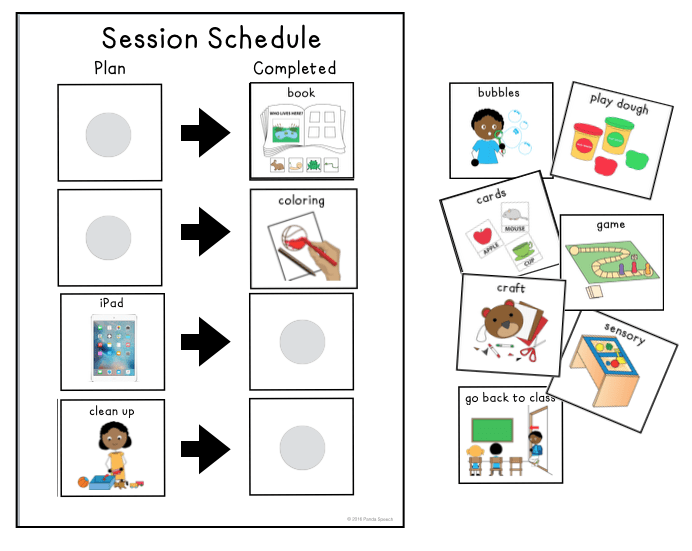Does your child struggle with daily transition’s.
? Say hello to Visual Schedules! ?
These life-savers are perfect for creating a structured, predictable environment, making life a tad bit easier and a whole lot more fun. Visual schedules teach skills by breaking them down into smaller steps. These tools are especially helpful because they offer a non-verbal method of helping kids to stay on track; parents are relieved of the role of drill sergeant!
Visual schedules are powerful tools for teaching skills and promoting independence in children, especially those who benefit from visual learning. Here’s an expansion on how visual schedules work and their advantages:
Breaking Down Tasks:
- Visual schedules break down tasks or routines into smaller, more manageable steps. This is particularly beneficial for children who may feel overwhelmed by the prospect of a complex task or routine. Each step becomes a clear, achievable goal.
Clarity and Predictability:
- Visual schedules provide clarity and predictability for children. Knowing what to expect and the order of activities helps reduce anxiety and uncertainty. This is especially crucial for children who thrive on routine or those with neurodivergent conditions like autism.
Non-Verbal Communication:
- Visual schedules offer a non-verbal method of communication. For children who may struggle with verbal communication or understanding complex instructions, visual cues provide a clear and concrete representation of what is expected.
Independence and Empowerment:
- By following a visual schedule, children can take ownership of their tasks and routines. This sense of control and independence is empowering and can boost their self-esteem. It shifts the role of the parent from a constant guide to a facilitator, allowing the child to navigate tasks with greater autonomy.
Reducing Power Struggles:
- Visual schedules can significantly reduce power struggles between parents and children. Instead of relying on verbal reminders or commands, the schedule serves as a visual reference that is less likely to be perceived as nagging. This can lead to a more positive and cooperative dynamic.
Encouraging Transitions:
- Transitions between activities can be challenging for some children. Visual schedules help smooth transitions by visually signaling the upcoming change. This prepares the child mentally, reducing resistance and facilitating a smoother shift from one task to another.
Customization for Individual Needs:
- Visual schedules are highly customizable. They can be tailored to suit the individual needs and preferences of each child. Whether it’s using pictures, words, or a combination of both, visual schedules can be adapted to cater to different learning styles.
Teaching Time Management:
- Visual schedules introduce the concept of time and sequence. Children learn to associate certain activities with specific times, aiding in the development of basic time management skills. This skill is essential for school and other future responsibilities.
Consistency Across Environments:
- Visual schedules can be used consistently across different environments, promoting continuity and reinforcing expectations. Whether at home, school, or other settings, the child encounters a familiar tool that helps maintain a sense of routine and structure.
Gradual Fading:
- Visual schedules can be gradually faded as children become more accustomed to routines and gain confidence in completing tasks independently. This allows for a natural progression toward relying less on visual cues over time.
In summary, visual schedules are valuable tools that offer a structured, visual representation of tasks and routines. They facilitate learning, independence, and cooperation while minimizing potential conflicts between parents and children.
Please feel free to us this visual schedule:
